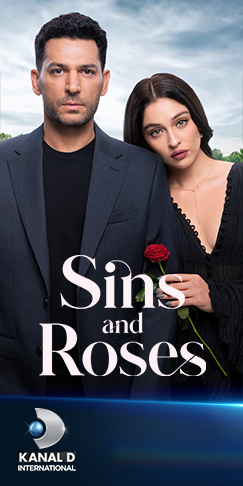Johannes Gropp, Founder & CEO of StoryZoo, spoke to ttvnews about the importance of creating high-quality content that stands out from the rest for being both entertaining and educational, and helping shape the minds of kids all over the world.
Through the proliferation of streaming platforms, there’s a mountain of content being offered to kids on a daily basis, making it difficult for them to choose what to watch, and for parents to filter through it and determine what is actually good and what’s not.
The biggest challenge for kids’ content producers is standing out among all of this content, and StoryZoo believes it’s important to do so, but for the right reasons. The Amsterdam-based group focuses on “educating through joy”, creating and offering high-quality content that doesn’t just entertain young viewers, but also teaches them values and skills necessary to grow.
StoryZoo’s content is curated with this motto in mind, focusing on education that’s done in a fun, respectful and age-appropriate way, with learning disguised as play.
In the following interview with ttvnews, Johannes Gropp, Founder & CEO of StoryZoo, talks about the company’s goal of creating high-quality content, starting early with language exposure, and treating every piece of content as something that could shape a young mind.
What is your current vision of the children’s content industry? What do you think will be the main trends in terms of genres and productions for 2025?
The children’s content industry today is like a candy store with no labels—bright, colorful, and sometimes overwhelming. While it’s great that there’s so much available, not all of it is good for growing minds. That’s why we believe high-quality, meaningful entertainment is more important than ever.
For 2025, we see a rise in edutainment, inclusive storytelling, and—thankfully—a return to quality-first content. StoryZoo is part of that movement. We focus on content that doesn’t just fill screen time, but enriches it, especially through early foreign language exposure, which is a massive advantage for young learners.
What are the main challenges of producing children’s content today? What do you look for when selecting projects for your catalog?
The biggest challenge? Standing out for the right reasons. There’s a tidal wave of content out there, but much of it is rushed, shallow, or lacks any real educational value. The truth is: children can’t always choose what they watch—so it’s our job as producers to make sure what’s offered is the absolute best.
When we evaluate new projects, we look for creativity, cultural adaptability, and educational integrity. Does it teach something? Does it do so in a fun, respectful, and age-appropriate way?
With StoryZoo and our series StoryZoo adventures we had already amazing cooperations with the Van Gogh Museum, the London Symphony Orchestra and the European Space Agency, we’ve built a format that introduces kids to culture, music and general knowledge. It’s learning disguised as play—and that’s the secret sauce.
What are the star titles in your current catalog for the international market?
Our flagship series StoryZoo Adventures remains the hero of our catalog. It’s multilingual, charmingly animated, and thoughtfully crafted to combine early language learning with gentle storylines and lovable characters.
In a world where kids often watch the same episode repeatedly (and we know they do), we make sure that every repeat teaches them something new—whether it’s a word in a different language or a lesson about nature, friendship, or curiosity. That’s why educators love it, and parents can breathe easy hitting “play.”
Unlike previous generations, who accessed content only on linear television, having content available whenever and wherever they want is the norm for today’s children. How do you think the evolution of streaming has changed the business of distributing children’s content?
Streaming has democratized access—kids can watch what they want, when they want, which sounds ideal… but also means the quality filter is weaker than ever. Suddenly, the algorithm is in charge of babysitting. That’s a bit scary.
This makes trusted brands like StoryZoo even more essential. Parents need to know that what their child clicks on is safe, age-appropriate, and enriching. Streaming also helps us reach families all over the world, and tailor content for specific languages and regions—which is perfect for our language-learning model.
In this sense, which platforms and territories do you currently work with? In which regions do you see the greatest potential for growth for your content?
We work with various platforms—streamers, broadcasters, and educational apps—throughout Europe, Latin America, and increasingly in Asia and Africa. Our content thrives in multilingual regions where there’s a high value placed on early English learning, or whatever the first language is.
We see tremendous potential in Southeast Asia, Eastern Europe, and the Middle East, where parents are hungry for content that combines entertainment with real educational impact. And as screen time becomes more common even in rural areas, the need for quality is only growing.
How do you see the evolution of children’s content and younger audiences in the coming years?
We’re moving toward a generation that’s more digital, more global, and more emotionally aware. Kids today aren’t just watching—they’re interacting, learning, and forming worldviews from the content they consume. So it’s our responsibility to offer them something thoughtful, diverse, and developmentally sound.
We believe in nurturing language skills, yes—but also curiosity, kindness, and cultural understanding. These aren’t just viewers—they’re future citizens. If that doesn’t deserve the best we can produce, what does?
Anything else you’d like to add?
Kids deserve our best. They may not be able to articulate what “quality content” means, but they sure know how it makes them feel—and what sticks with them. It’s easy to underestimate children’s intelligence, but they’re far more perceptive than we give them credit for.
That’s why, at StoryZoo, we don’t cut corners. We believe in educating through joy, in starting early with language exposure, and in treating every piece of content as something that could shape a young mind. Because one day, these kids will run the world—and we’re just here to give them a good start (and maybe a catchy song stuck in their head).










